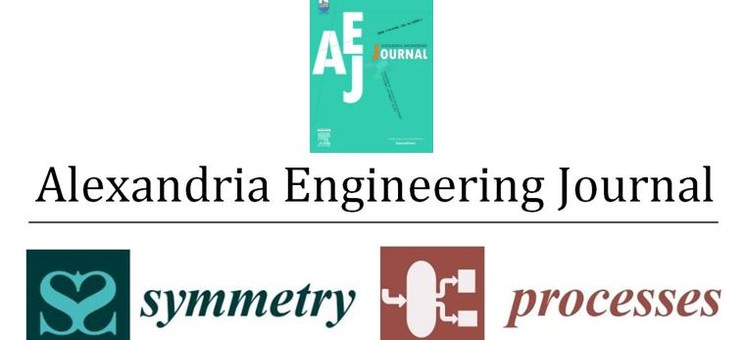Trzy publikacje dotyczące zastosowań promieniowania gamma i X oraz metod sztucznej inteligencji w badaniach przepływów wielofazowych ukazały się w czasopismach: Alexandria Engineering Journal (IF 2.460, 70 pkt), Symmetry (IF 2.427, 70 pkt) i Processes (IF 2.753, 70 pkt). Artykuły powstały we współpracy międzynarodowej, współautorem prac jest dr hab. inż. Robert Hanus, prof. PRz.
- Roshani M., Phan G.T.T., Muhammad Ali P.J., Roshani G.H., Hanus R., Duong T., Corniani E., Nazemi E., Kalmoun E.M.: Evaluation of flow pattern recognition and void fraction measurement in two phase flow independent of oil pipeline’s scale layer thickness. Alexandria Engineering Journal 60(1), 2021, 1955-1966. (https://www.sciencedirect.com/science/article/pii/S1110016820306256)
Abstract
The main objective of the present research is to combine the effect of scale thickness on the flow pattern and characteristics of two-phase flow that is used in oil industry. In this regard, an intelligent nondestructive technique based on combination of gamma radiation attenuation and artificial intelligence is proposed to determine the type of flow pattern and gas volume percentage in two phase flow independent of petroleum pipeline’s scale layer thickness. The proposed system includes a dual energy gamma source, composed of Barium-133 and Cesium-137 radioisotopes, and two sodium iodide detectors for recording the transmitted and scattered photons. Support Vector Machine was implemented for regime identification and Multi-Layer Perceptron with Levenberg Marquardt algorithm was utilized for void fraction prediction. Total count in the scattering detector and counts under photo peaks of Barium-133 and Cesium-137 were assigned as the inputs of networks. The results show the ability of presented system to identify the annular regime and measure the void fraction independent of petroleum pipeline’s scale layer thickness.
- Roshani G.H., Muhammad Ali P.J.M., Mohammed S., Hanus R., Abdulkareem L., Alanezi A.A., Nazemi E., Eftekhari‐Zadeh E.: Feasibility study of using X‐ray tube and GMDH for measuring volume fractions of annular and stratified regimes in three‐phase flows. Symmetry 13(4), 2021, 613. (https://www.mdpi.com/2073-8994/13/4/613)
Abstract
In this paper, the feasibility of using an X-ray tube instead of radioisotope sources for measuring volume fractions of gas, oil, and water in two typical flow regimes of three-phase flows, namely, annular and stratified, is evaluated. This study’s proposed detection system is composed of an X-ray tube, a 1 inch × 1 inch NaI detector, and one Pyrex-glass pipe to model different volume fractions for two flow regimes, annular and stratified. Group method of data handling (GMDH), a powerful regression tool, was also implemented to analyze the obtained data. The obtained results in this work indicate that a simple system based on an X-ray tube and just one NaI detector could be a potential alternative to radioisotope-based systems for separate measurements of gas, oil, and water volume fractions in annular and stratified flow regimes of a three-phase flow.
- Roshani G.H., Muhammad Ali P.J.M., Mohammed S., Hanus R., Abdulkareem L., Alanezi A.A., Sattari M.A., Amiri S., Nazemi E., Eftekhari‐Zadeh E., Kalmoun E.M.: Simulation study of utilizing X-ray tube in monitoring systems of liquid petroleum products. Processes 9(5), 2021, 828. (https://www.mdpi.com/2227-9717/9/5/828)
Abstract
Radiation-based instruments have been widely used in petrochemical and oil industries to monitor liquid products transported through the same pipeline. Different radioactive gamma-ray emitter sources are typically used as radiation generators in the instruments mentioned above. The idea at the basis of this research is to investigate the use of an X-ray tube rather than a radioisotope source as an X-ray generator: This choice brings some advantages that will be discussed. The study is performed through a Monte Carlo simulation and artificial intelligence. Here, the system is composed of an X-ray tube, a pipe including fluid, and a NaI detector. Two-by-two mixtures of four various oil products with different volume ratios were considered to model the pipe’s interface region. For each combination, the X-ray spectrum was recorded in the detector in all the simulations. The recorded spectra were used for training and testing the multilayer perceptron (MLP) models. After training, MLP neural networks could estimate each oil product’s volume ratio with a mean absolute error of 2.72 which is slightly even better than what was obtained in former studies using radioisotope sources






